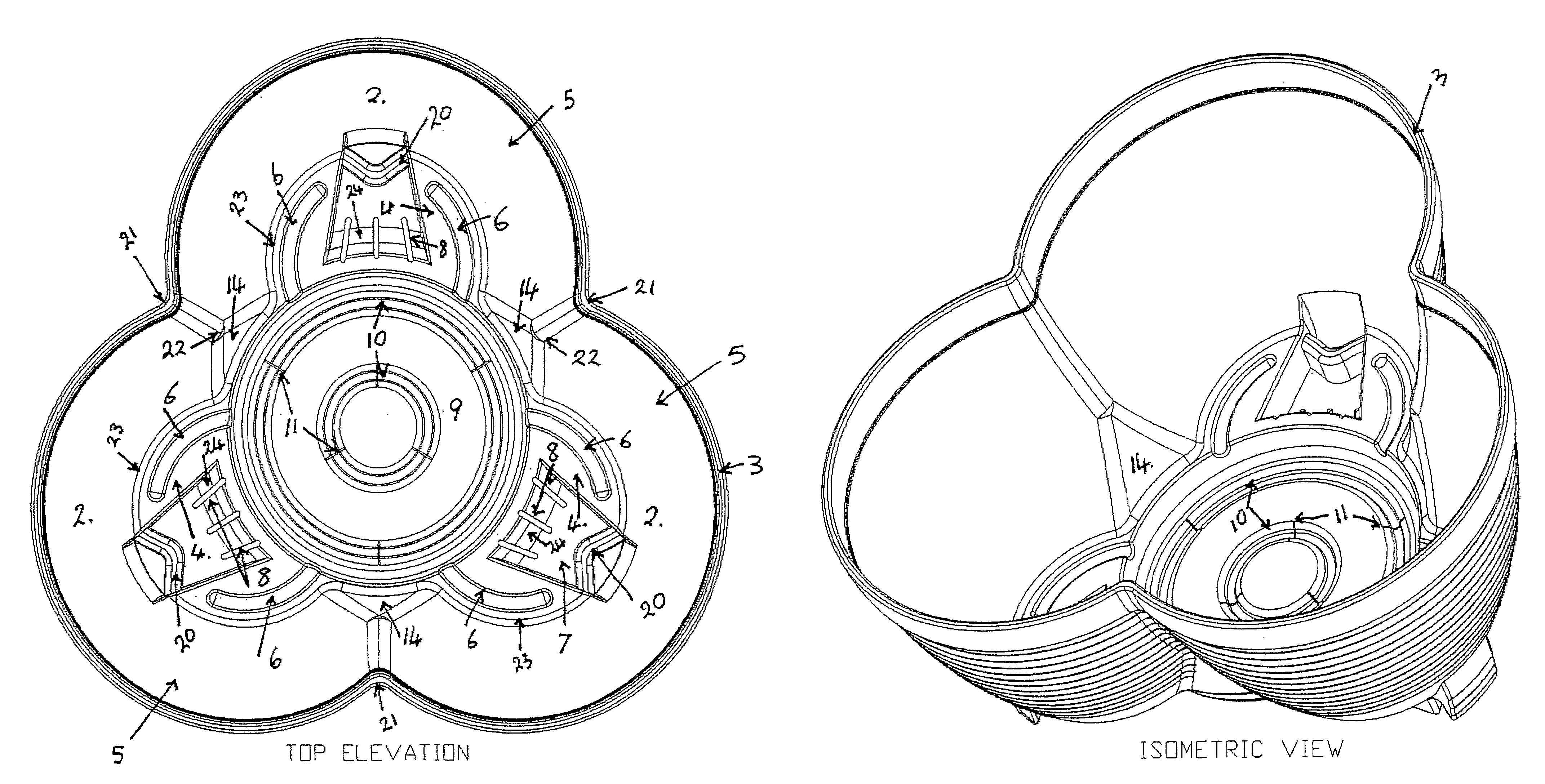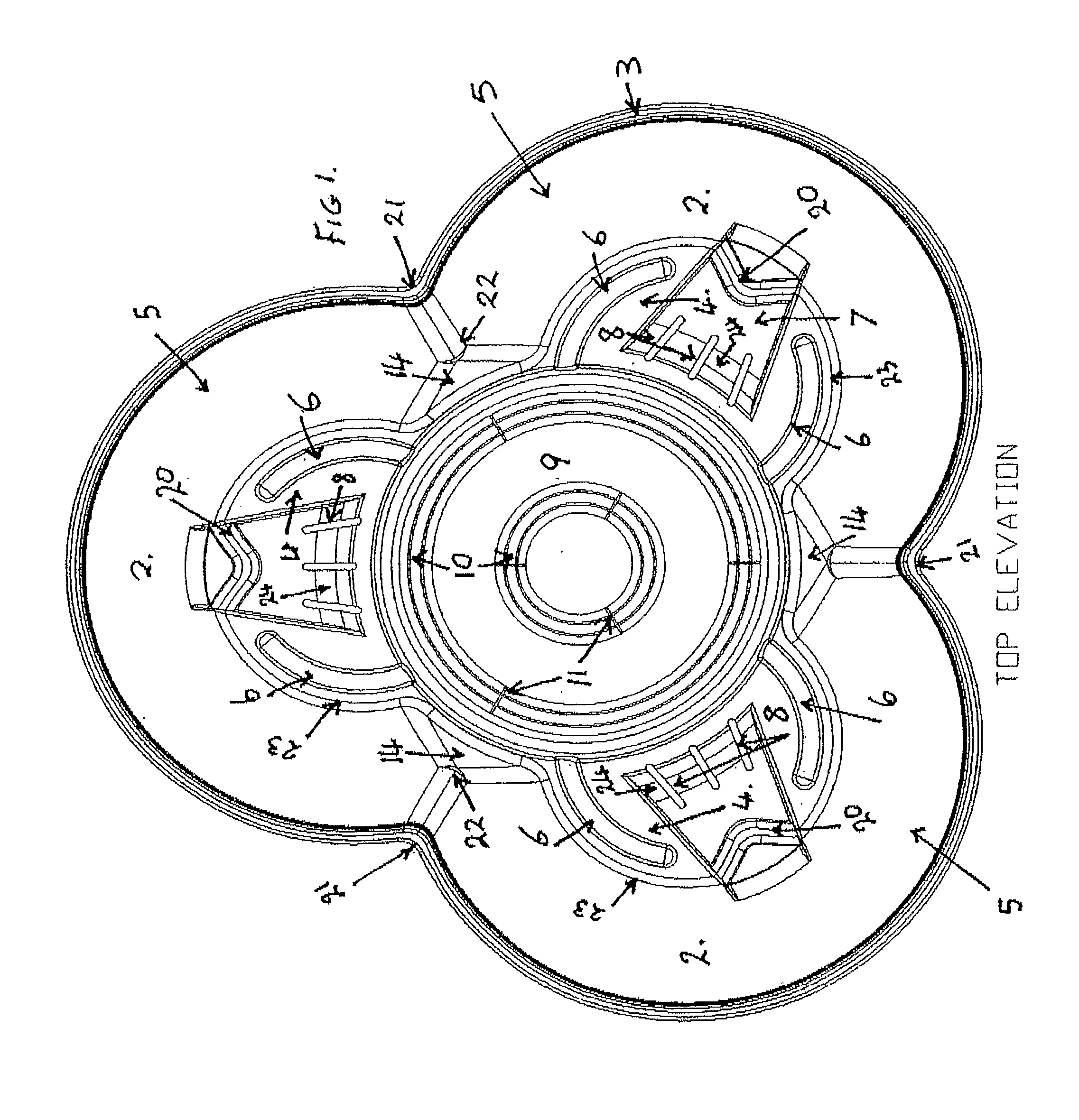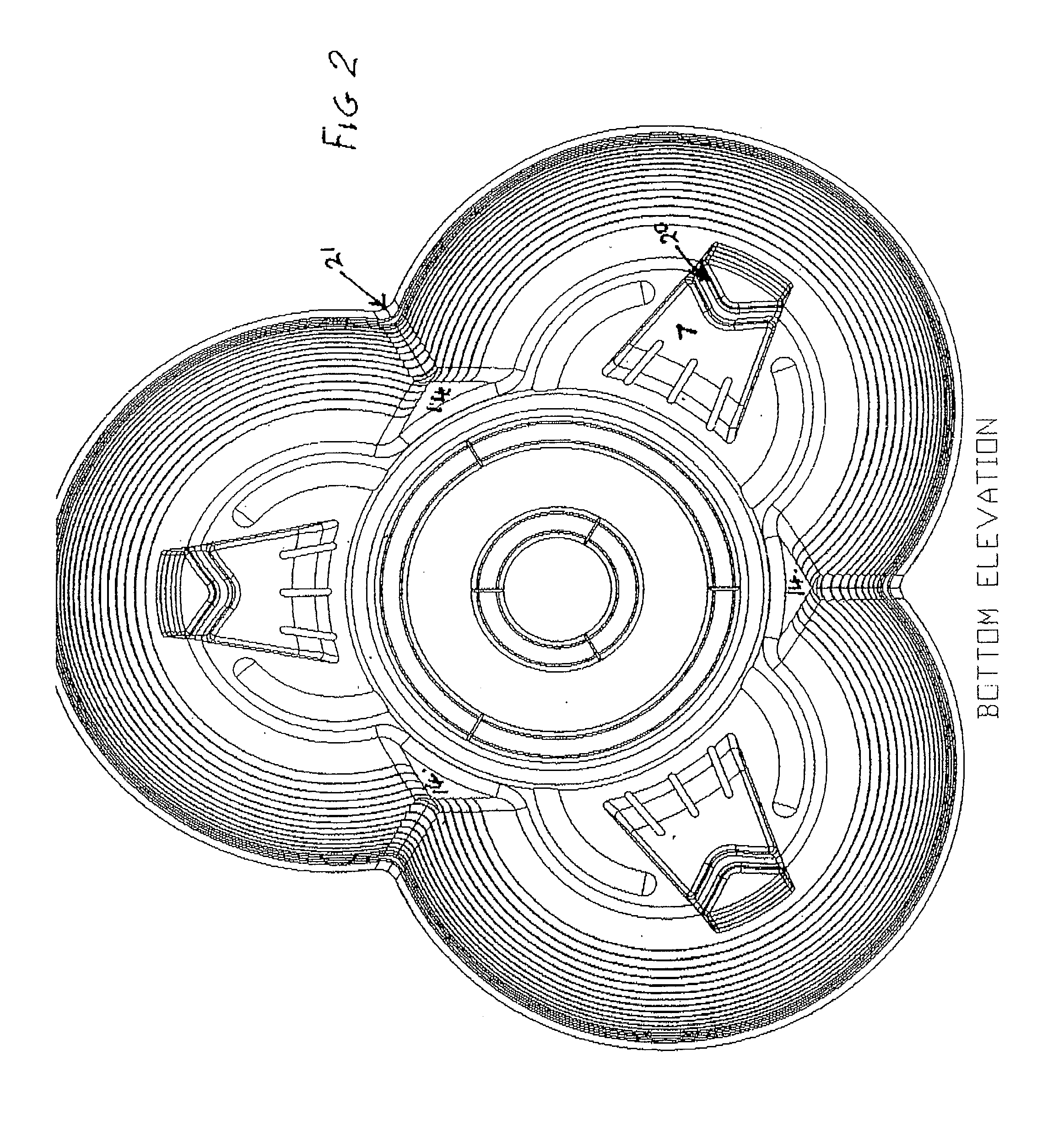Stackable plant pot
a plant pot and spherical technology, applied in the field of stackable plant pots, can solve the problems of unsuitable use, unadaptable arrangement of plant pots, and complex design and construction of individual pots, and achieve the effect of preventing the build-up of unwanted surplus drainage and easy removal
- Summary
- Abstract
- Description
- Claims
- Application Information
AI Technical Summary
Benefits of technology
Problems solved by technology
Method used
Image
Examples
Embodiment Construction
[0054]As shown in the diagrams, particularly FIGS. 1 and 2, of the present invention includes a plant pot which, in use, is adapted to be stacked with one or more similar plant pots, said plant pot comprising: a cavity depicted in FIG. 1 with three radially located lobed sub-cavity sections 2 with thickened rim 3 a base portion 4 and side walls 5 a series of water flow directing gutters 6, also referred to as primary water flow directing gutters 6, interconnecting pot leg structures 7 with rapid release drainage holes 8, also referred to as secondary drainage outlet 8, a centrally located water catchment region 9, provided with further water flow directing gutters 10, also referred to as secondary water flow directing gutters 10, and time controlled water flow inhibited excess water drainage slits 11, also referred to as primary drainage outlet 11, a moisture retaining mat working 13 A and B of FIG. 9 in co-operation with the plant pot as shown in FIGS. 9A and 19A B and C and a soil...
PUM
 Login to View More
Login to View More Abstract
Description
Claims
Application Information
 Login to View More
Login to View More - R&D
- Intellectual Property
- Life Sciences
- Materials
- Tech Scout
- Unparalleled Data Quality
- Higher Quality Content
- 60% Fewer Hallucinations
Browse by: Latest US Patents, China's latest patents, Technical Efficacy Thesaurus, Application Domain, Technology Topic, Popular Technical Reports.
© 2025 PatSnap. All rights reserved.Legal|Privacy policy|Modern Slavery Act Transparency Statement|Sitemap|About US| Contact US: help@patsnap.com



